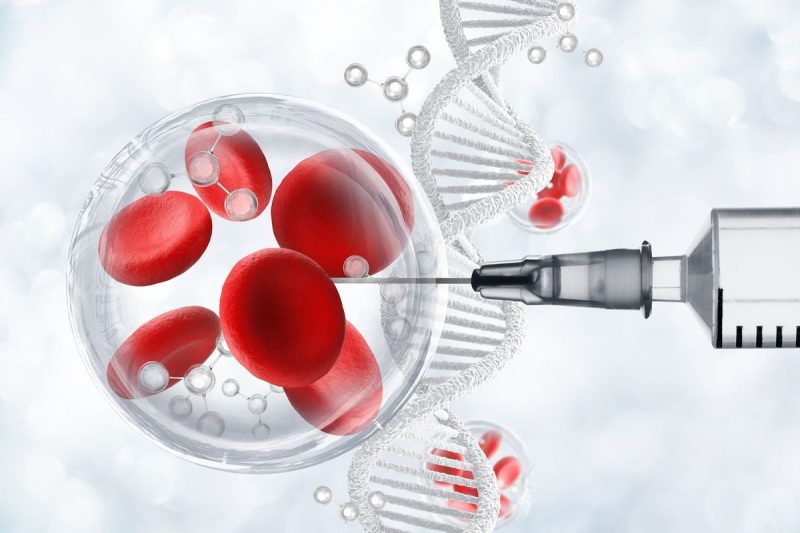Investors interested in the life science sector are well aware of the importance of biotechnology.
From finding cures for diseases to feeding future generations, many areas of day-to-day life are influenced by players in the biotechnology space, and expert projections show the industry’s future looks bright.
But how can investors gain exposure to biotechnology? Here’s a brief overview of how to invest in the expanding biotechnology market, from stocks to watch to exchange-traded funds (ETFs).
How to invest in biotechnology stocks?
The main method of investing in the biotech sector is through stocks. Right off the bat, when investing in the biotech sector it’s important to understand that there is a difference between a biotech company and a pharmaceutical company.
“From a philosophical standpoint, biotechnology is a risk-taking enterprise, while the pharmaceutical industry is about managing and diversifying risk,” Investopedia explains in an article. Notably, the publication points out that biotech stocks tend to have insignificant revenue compared to pharmaceutical stocks.
When investing in biotech, investors should also pay attention to the US Food and Drug Administration (FDA), which requires that all companies in the sector establish sufficient bodies of information to show that their drugs are safe and effective. That is generally accomplished in the clinical trial phase of product testing, which typically consists of a series of three clinical studies.
Additionally, as with most other sectors, when investing in biotechnology stocks investors must decide on the level of risk they are willing to take. For instance, a large, established biotechnology company with a multibillion-dollar market cap is less likely to succumb to bad market conditions than a more speculative, newly listed company in the clinical trial phase.
How to invest in biotechnology ETFs?
While investing in biotech stocks is generally the more popular choice when it comes to getting involved in the sector, ETFs are a way to mitigate some of the risks that are inherent with investing in stocks.
ETFs hold assets like stocks, commodities and bonds, and trade close to their net asset value. Typically, ETFs track an index. For biotechnology, there are several indexes that can be followed, including the S&P Biotech Select Industry Index (INDEXSP:SPSIBI), the NYSE Arca Biotechnology Index (INDEXNYSEGIS:BTK) and the NASDAQ Biotechnology Index (INDEXNASDAQ:NBI).
The largest ETF in the biotech sector is the SPDR S&P Biotech ETF (ARCA:XBI), which launched on February 6, 2006, and tracks 137 holdings in its portfolio. Its top three weighted companies are Crinetics Pharmaceuticals (NASDAQ:CRNX), Exelixis (NASDAQ:EXEL) and Dyne Therapeutics (NASDAQ:DYN).
The second largest biotech ETF is the iShares NASDAQ Biotechnology ETF (NASDAQ:IBB), which launched on February 5, 2001. This ETF tracks 218 holdings, with the top three — Gilead Sciences (NASDAQ:GILD), Amgen (NASDAQ:AMGN) and Regeneron Pharmaceuticals (NASDAQ:REGN)— weighted at close to or over 8 percent each.
Investors may also want to consider small biotech ETFs — click here for an overview.
What’s the outlook for biotechnology?
It’s often a slow wait when it comes to gains in the biotech market as companies rely on FDA approvals and feedback.
In terms of the sector’s future outlook, Grand View Research predicts that the global biotechnology market will have a compound annual growth rate of 13.96 percent between 2024 and 2030 to reach US$3.88 trillion by the end of the forecast period.
It attributes this growth to the increasing need for new drugs to treat chronic diseases, such as strokes, cancer, asthma and hypertension. The focus is on diagnostics and therapeutic solutions for these chronic diseases. There is also increasing demand for biotechnology innovation in the agriculture sector in response to rising demand for organic food products.
For its part, Verified Market Research is forecasting the global biotechnology market will reach a value of more than US$5.25 trillion in 2030. The firm sees significant advancement and investment in research and development, the rising prevalence of infections and chronic diseases, and increasing government and regulatory support as major drivers of revenue growth for this life science sector in the coming years.
The nanotechnology drug market is a subsector of the biotech space that is also expected to see major growth in the coming years. Precendence Research forecasts that this sector will experience a CAGR of 8.13 percent between 2023 and 2032 to reach a total value of US$183.11 billion.
‘Nanotechnology is critical in the development of drug-delivery technologies that have the potential to expand the medical market,’ stated the report. ‘Nanotechnology can enhance the efficacy of medications that have failed clinical trials. It provides drug delivery systems, treatment, and management for chronic diseases like cancer, HIV/AIDS, and diabetes.’
Securities Disclosure: I, Melissa Pistilli, hold no direct investment interest in any of the companies mentioned in this article.

